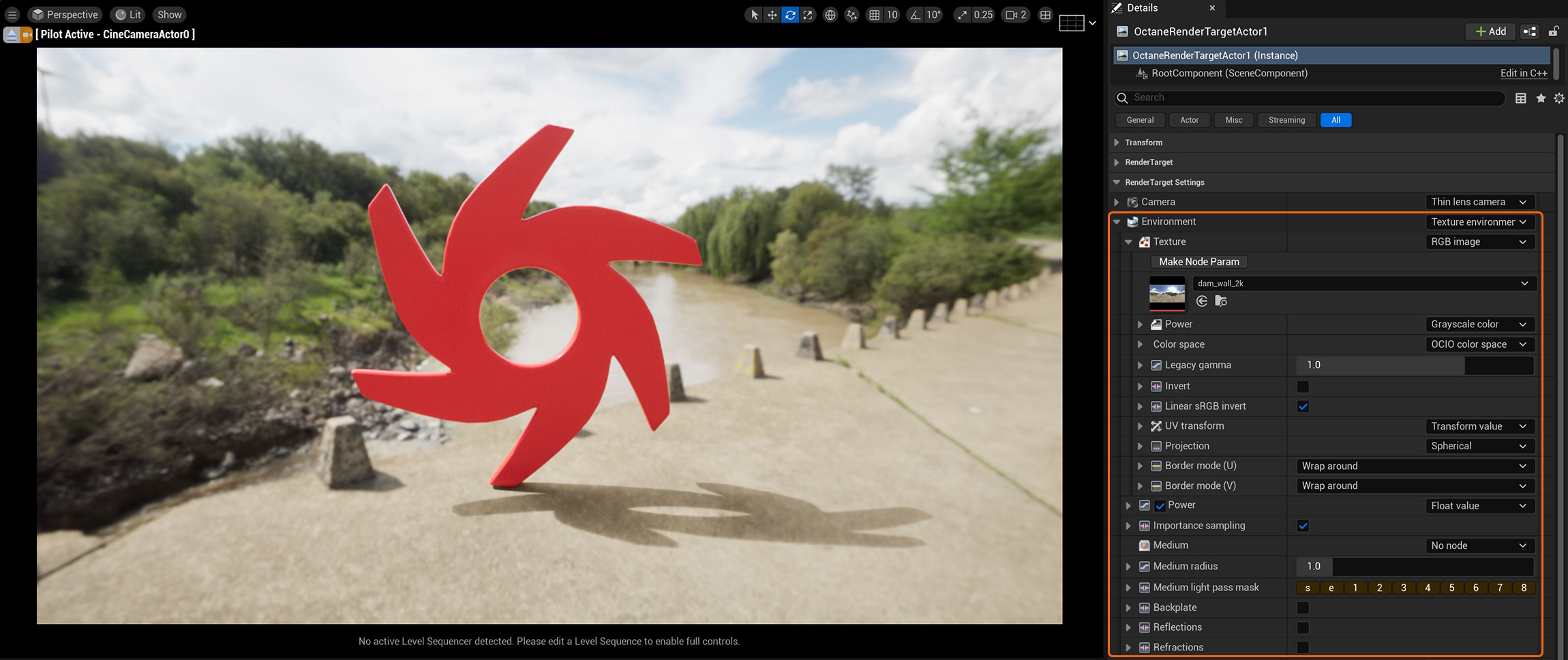
The Texture environment affects the environment's illumination and color. This environment type can accept an HDRIAn image which presents more than 8 bit per color channel unlike most common image formats. environment texture for illumination (figure 1). You can access the Texture environment from the Octane Render Target Actor by clicking on the Details panel, then clicking on the Environment rollout.

Figure 1: An HDRI texture lights the environment
Texture - Contains several sub-parameters specific to the image being used as an Environment map. The RGB Image node is the preferred node type for loading in a HDRI texture map.
Power - Adjusts the light's overall strength. This affects the image's overall contrast and exposure levels.
Importance Sampling - This toggles the importance sampling of the Sky texture, similar to the importance sampling in the Texture environment.
Medium - This parameter accepts an AbsorptionDefines how fast light is absorbed while passing through a medium., ScatteringDefines how fast light gets scattered when traveling through the medium., or Volume medium node to create volume or fog effects across the scene. For more information, see the Volume MediumsThe behavior of light inside a surface volume described by scatter, absorption, and transmission characteristics. topic under the Effects category in this manual.
Medium Radius - Adjusts the medium's scale.
Medium Light Pass Mask - Used to enable or disable lighting on the scattering environment medium.
Backplate - This makes the visible environment behave as a background plate.
Reflections - Allows the visible environment to be visible in the material's reflections.
Refractions - Allows the visible environment to be visible in the material's refractions.